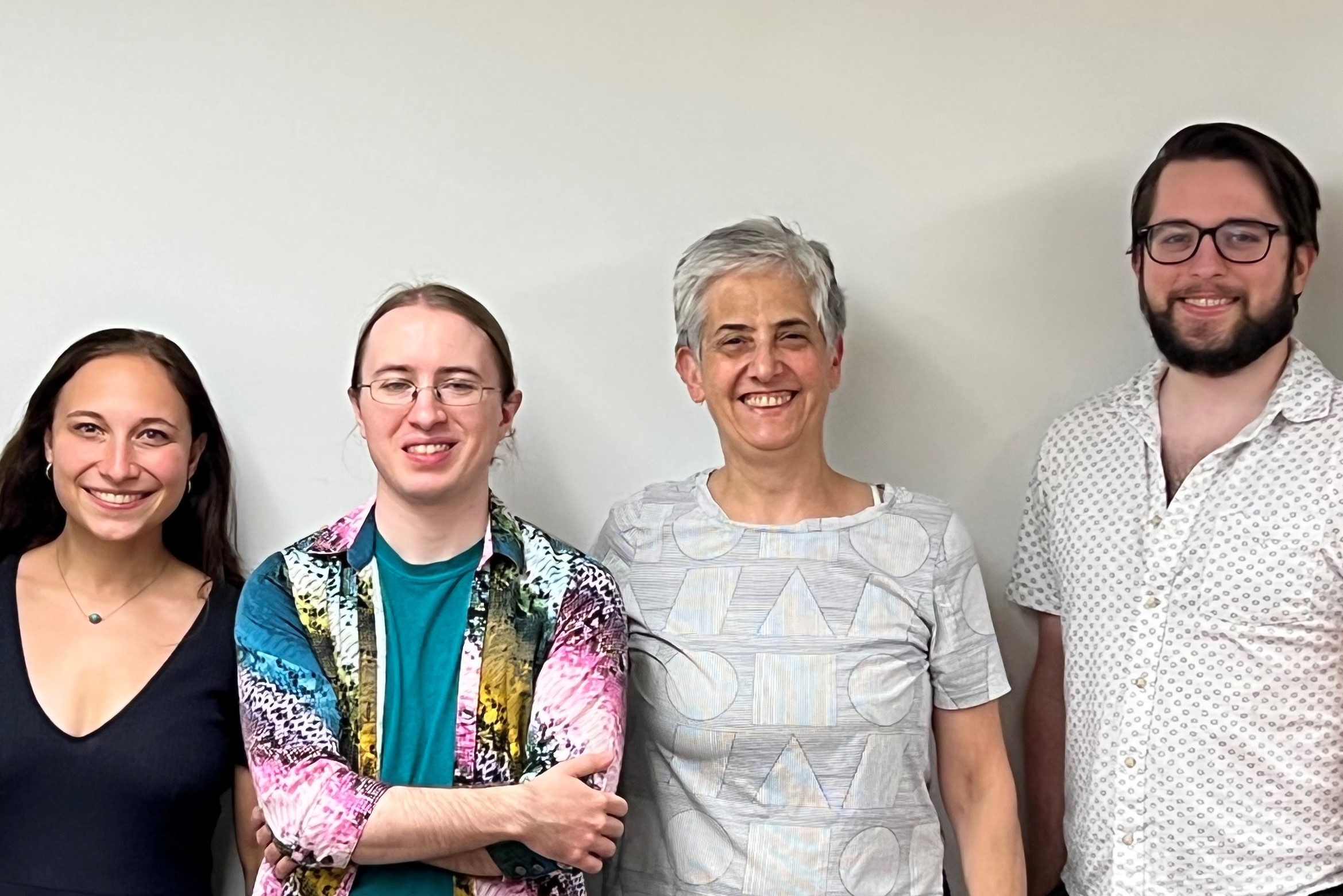News

Dan Burgdorf successfully defends their dissertation
On July 22nd, Ph.D. student Dan Burgdorf successfully defended their dissertation thesis entitled: "A Functional Cognitive Difference Behind the C/V Distinction: Evidence from Glides".
Dan is shown here, from the left: grad student Rachel Vogel, Dan Burgdorf, committee member Dr. Abigail Cohn, and graduate student Joseph Rhyne. Committee member Dr. Draga Zec and Committee Chair Dr. Sam Tilsen attended remotely via Zoom.
25th July 2022

Rachel Vogel successfully defends her dissertation
On June 8 Ph.D. student Rachel Vogel successfully defended her dissertation "Phonology of vowel devoicing: A typological perspective".
With her dissertation completed, Rachel is now headed to Yale Law School this Fall, where she intends to combine her knowledge of linguistics with law to advance issues of social justice.
Rachel is shown here with members of her Dissertation committee - from left Dr. Draga Zec, Rachel Vogel, Dr. Abigail Cohen (committee chair), and Dr. Sam Tilsen.
25th July 2022

Katherine Blake successfully defends her dissertation
On April 15 PhD student Katherine Blake successfully defended her dissertation, entitled: "Phonological markedness effects on noun-adjective ordering".
Katie is shown here with her committee members - from the left: Dr. Helena Aparicio, Dr. Martin Van Schijndel, Dr. Draga Zec (attended remotely via Zoom), Katie Blake, and Dr. Abigal Cohn (Committee chair).
25th May 2022

Seung-Eun Kim & Dr. Sam Tilsen publish new paper on how phonetic measures covary with speech rate
PhD candidate Seung-Eun Kim and Dr. Sam Tilsen published a paper in the July 2022 edition of the Journal of Phonetics. The paper, titled "An investigation of functional relations between speech rate and phonetic variables", characterizes how phonetic measures covary with speech rate.
Abstract:
It is well known that speech rate is correlated with many phonetic variables. The current study aims to obtain a more precise characterization of how phonetic measures covary with speech rate.
Specifically, we assess whether there is evidence for linear and/or non-linear relations with rate, and how those relations may differ between phrase boundaries.
Productions of English non-restrictive (NRRCs) and restrictive relative clauses (RRCs) were collected using a method in which variation in speech rate is cued by the speed of motion of a visual stimulus. Articulatory and acoustic variables associated with phrase boundaries were analyzed; for each variable, Bayesian regression was used to obtain posterior parameter distributions for a set of generalized linear models.
Analyses of posterior predictions showed that:
- Phonetic variables associated with a phrase boundary that follows the relative clause (post-RC boundary) were more susceptible to rate variation than those at a boundary that precedes the relative clause (pre-RC boundary).
- Phonetic variables at the post-RC boundary also showed evidence for non-linear relations with rate, which suggest floor or ceiling attenuation effects at extreme rates.
- On the other hand, substantial differences between syntactic contexts were found primarily at the pre-RC boundary.
- A high degree of participant-specificity was observed in F0-related variables.
18th May 2022
